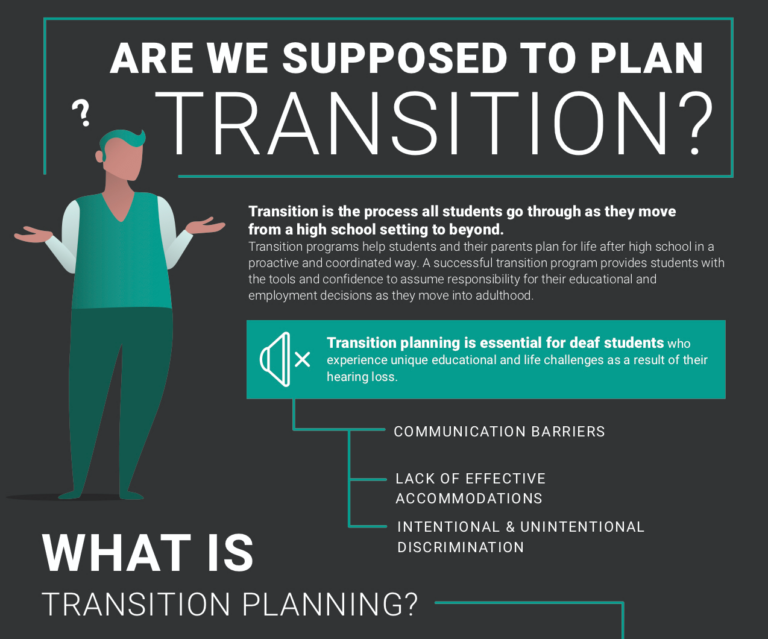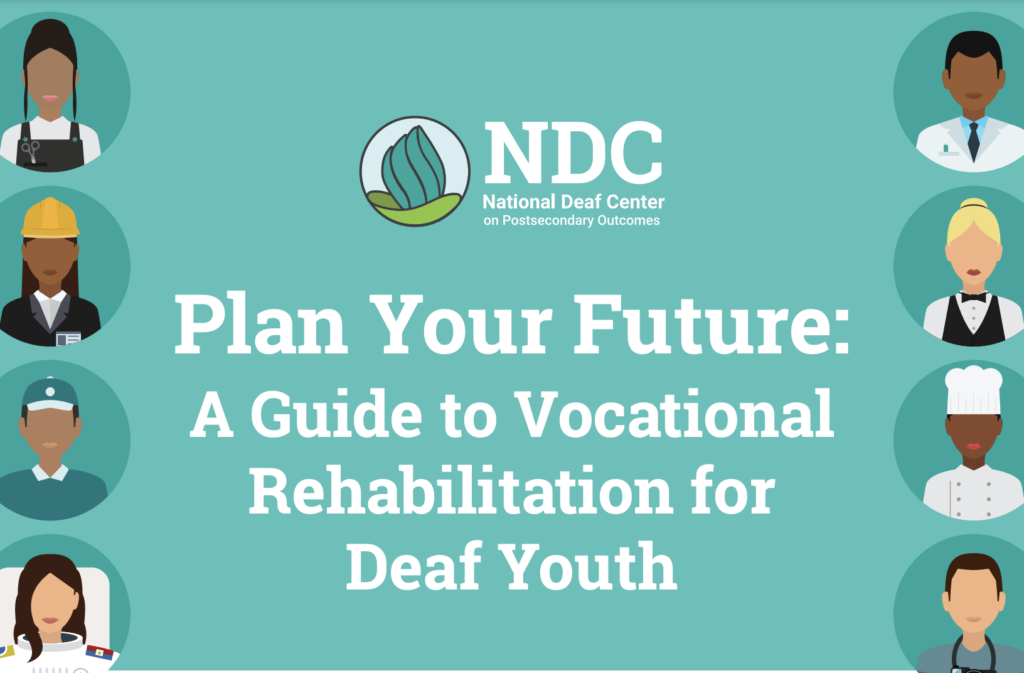The goal of transition is to ensure students are prepared for life after high school. Transition planning should consist of small milestones like increasing self-advocacy skills and larger milestones like completing degrees or certifications and getting jobs. Transition goals are deeply personal and individualized — and often change over time. NDC has developed a variety of resources and tools using evidence-based strategies to support transition planning for deaf youth.
What is Transition Planning?
Transition planning is the process students go through as they move from high school to beyond. A transition plan is a team effort to help identify the student’s strengths and needs as well as future goals.
For deaf students, transition planning is essential to preparing for life after high school. Transition programs and training opportunities, like work-based learning, can give students the tools and confidence to succeed and ultimately improve postsecondary outcomes.

Strategies to Develop Career Readiness
Work Based Learning (WBL) programs and Virtual Career Exploration (VCE) promote career success for deaf students, which leads to improved social capital and opportunities for engagement. These programs also provide an opportunity for deaf students to work with people they would normally not have contact with, as well as experience a sense of community. Deaf students benefit from opportunities to develop workplace readiness skills that may not otherwise be accessible to them.
Resource Spotlight

Deaf youth have many different hopes, dreams, and goals. Many programs and services are available to help them succeed. As part of developing a transition plan, students need to be familiar with obtaining vocational rehabilitation (VR) support and take advantage of VR programs available to them in high school.
This guide summarizes the VR process and shares important information that will help students get the services they need to succeed.
FAQs About Transition and Employment
Stay Connected with NDC
- NDC | Help Team can answer questions, provide resources, connect people, and more.
- Subscribe to the newsletter and listserv to keep current and connect with others.
Dig Deeper
- Check out our online learning catalog for free professional development.
- Find more resources on transition, access & accommodations, and other topics.
- Check out the resources we’ve specifically curated for VR professionals and students.

NASDSE Guidelines
The National Association of State Directors of Special Education has developed Educational Service Guidelines for Optimizing Outcomes for Students who are Deaf or Hard of Hearing. Deaf students can reach their full potential, just like hearing students, when they have motivation and support from caring teachers and families. They need the same education standards and services as all students, with extra help when needed. These guidelines are here to help teachers, families, and others learn how to best support deaf students, and should be supplemented by additional resources that reflect current practices and advances to technology.





